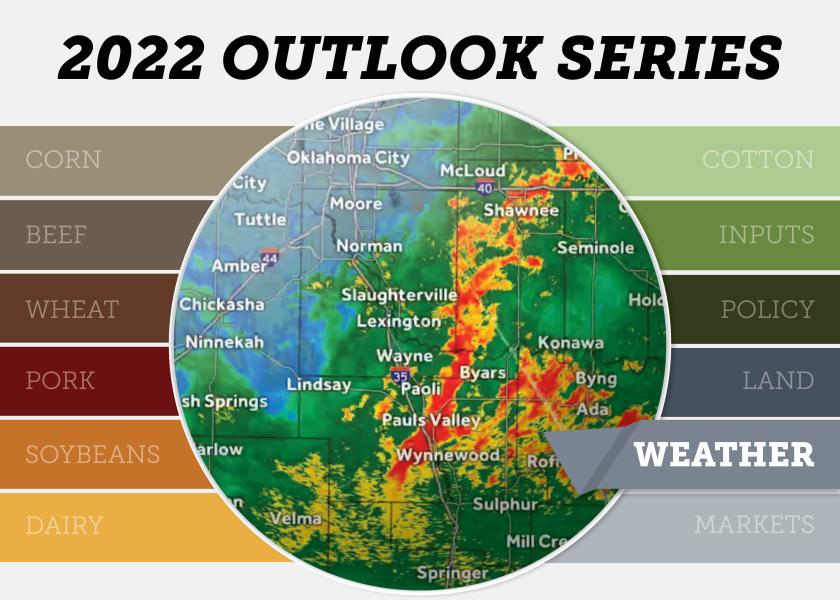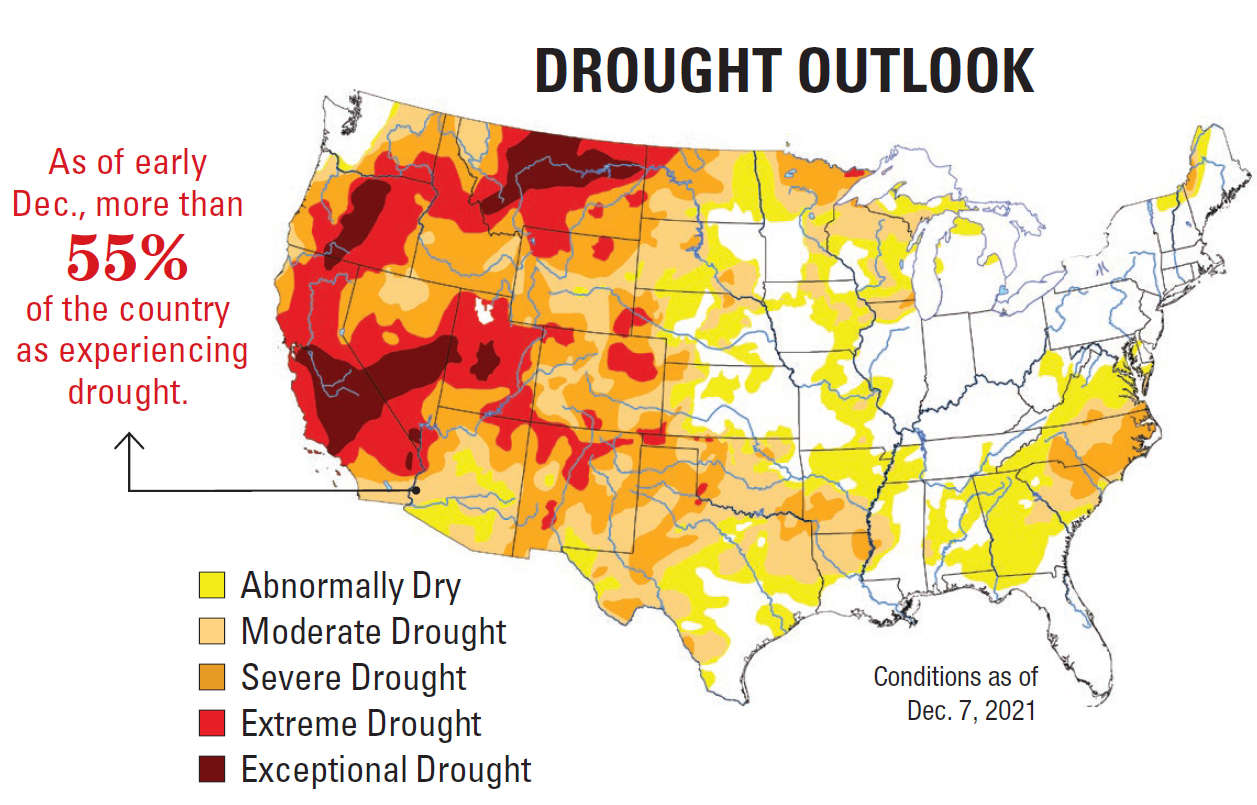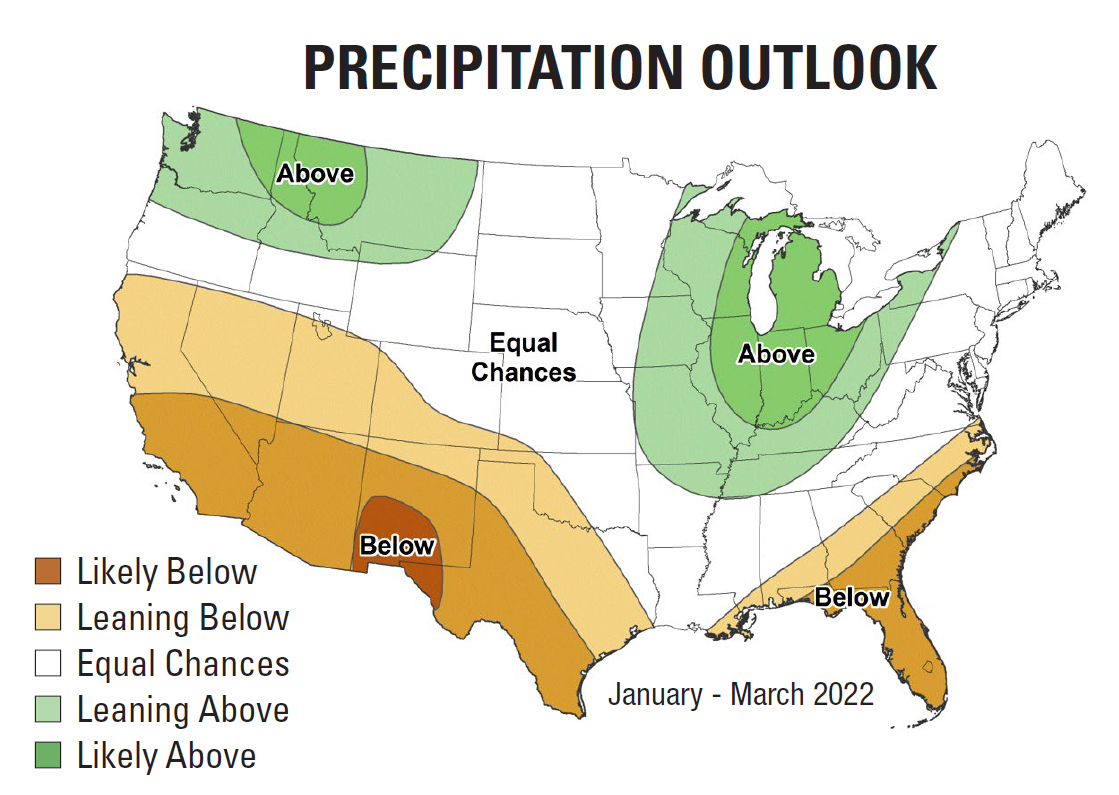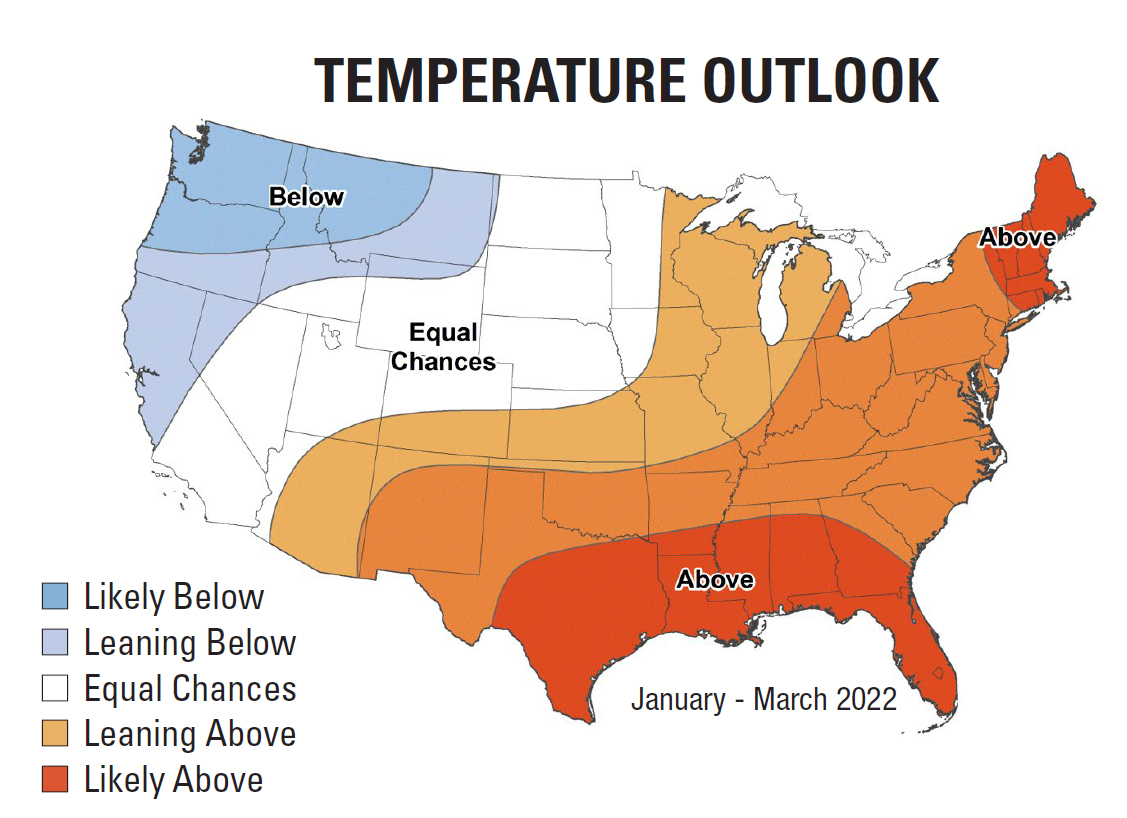2022 Weather Outlook: La Niña’s Encore

How will she impact drought conditions in 2022?
She’s back. La Niña has developed for the second consecutive year and is expected to last into early 2022.
“This could lead to a return of warm and dry conditions in the new year from southern California to the Southern Plains,” says Brad Rippey, USDA meteorologist. “Areas to the North may fair better, and Midwest areas could turn stormy this winter.”
How La Niña impacts and changes the current drought landscape will be key.
“As of early December, more than 55% of the country is experiencing drought,” Rippey says. “It’s the highest of almost nine years.”

Regions with early-year dryness could be problematic for the Corn Belt, adds Eric Snodgrass, Nutrien Ag Solutions principal atmos-pheric scientist.
“I’ll be watching from Texas to South Carolina because if we see drought development there, it could be an early-season indicator drought could expand North in the growing season,” he says.


WHAT TO WATCH
Beyond La Niña, Snodgrass is watching water temperatures in the Gulf of Alaska.
“The waters there are very cold,” he says. “If they stay cold until next spring or summer, I don’t like that for the Midwest. That’s because there is a decent correlation with cold water in the Gulf of Alaska and the potential for drought in Minnesota and nearby states.”
Here are additional 2022 outlook stories:
2022 Soybean Planting Projections are a Moving Target, Prices will Whipsaw
Drought and Demand Drive the 2022 Wheat Outlook
2022 Outlook: Why Corn’s Sweet Spot May Be Below $6 in the New Year
2022 Outlook: Pork Industry Rises from the Rubble








